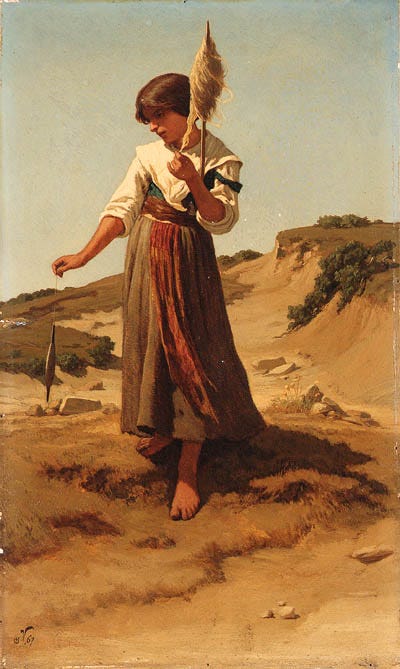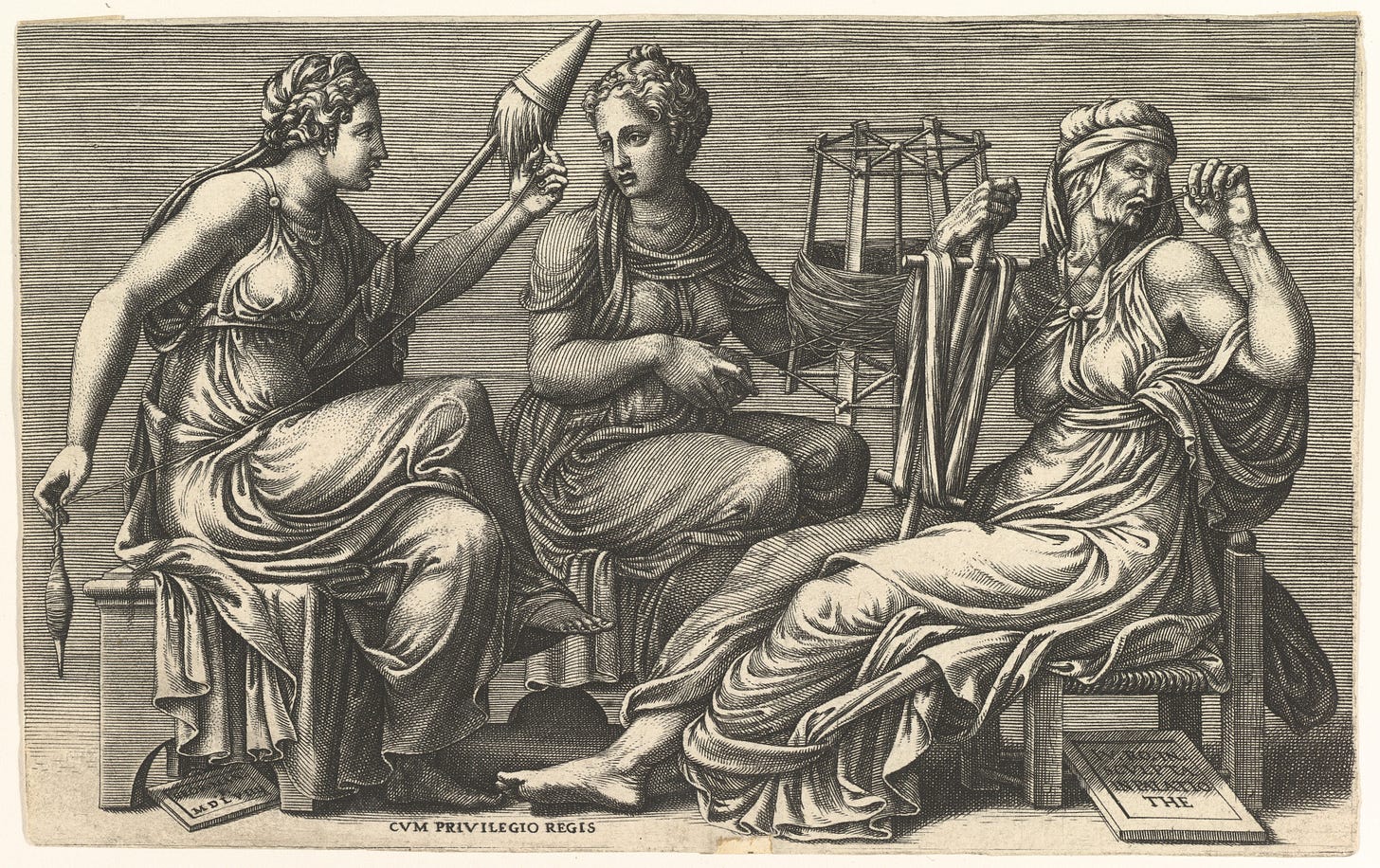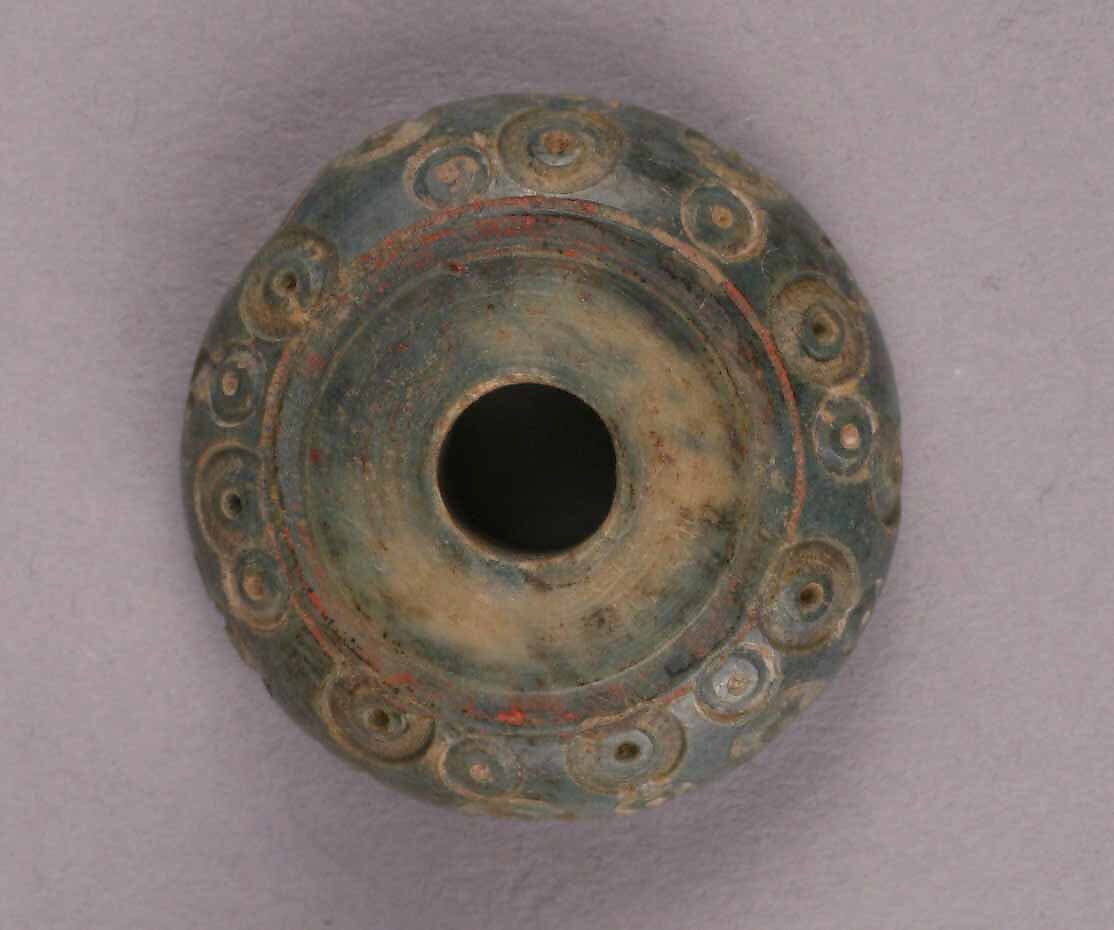One of the goals I made for 2023 was to spin more fiber, and I decided to start small - spinning 25 grams of fiber to knit a Sophie Scarf. Last night I finished the first set of singles for what will become a 2-ply, fingering/sport weight yarn, and I’m so glad I made the effort to get back into spinning - I truly think it is one of the most relaxing, meditative things that a human being can do.
I think part of the reason I find it so soothing is that I spin on a drop spindle, which is typically used while standing. Because of the movements that you make when you draw the fiber out, spin the spindle, and wind the thread onto the shaft, you tend to develop a slightly rocking rhythm as you work. I find that I shift my weight back and forth a little bit as I go through the process, and it is all these swaying, repetitive motions of spinning, in concert, that makes it so relaxing. As with most handcrafts, you can really get into ‘the zone’ when drop spindling - it’s almost trancelike.
Peasant Girl, spinning by Elihu Vedder, 1867
When the body is fully occupied in this way, the mind wanders down interesting paths. I often have good ideas when I’m spinning - like how good ideas come to you in the shower. Recently I’ve been thinking about spinning itself, especially drop spindling, and it’s historical and cultural significance.
For ancient Greeks and Romans, spinning yarn was associated with life and death - in their mythology, a trio of goddesses (known as the Parcae in Roman culture, and as the Fates or the Moirai in Greece) did the work of allotting lifespans. One goddess would spin the thread of a man’s life, another would measure it out or, in some stories, weave a tapestry, and a third wielded the shears, snipping the thread when the allotted length was reached. (There are similar goddesses known as the Norns in Norse mythology.) This thread, of course, would have been spun on a drop spindle, as the spinning wheel wasn’t invented for centuries after these tales were first told.
The Three Fates Clotho, Lachesis, and Atropos by Giorgio Ghisi
In stories and songs throughout time, spinning yarn or thread is revealed to be an essential part of life. From these Greek and Roman myths, to the tales collected by the Grimms, we get a sense of it’s significance. It is mystical, magical, but also practical, and necessary. For women, it could be an important source of income and therefore agency - the word spinster refers to a woman who is unmarried, perhaps because she can afford not to marry. It is, of course, also just work - though this labor is often completely overlooked.
The spinning of fiber into thread is historically a very gendered activity, as in most cultures it was exclusively done by women. The Romans especially considered it quite shameful for men to spin, believing it displayed male weakness. Because of this, when spindle whorls are found in Roman archaeological sites, it is typically understood that this means women were present in that community. Last year I read an extremely fascinating journal article (open access) about Roman military outposts along Hadrian’s Wall in the third and fourth centuries - these are not really places that you would expect to find many women living in, but the large numbers of spindle whorls that were discovered when excavating these sites, and particularly one called Vindolanda, seems to indicate that there were plenty of female inhabitants.
spindle whorl discovered at Vindolanda
Ancient spindle whorls tend to be found more than other textile tools, because they are typically made of stone, clay, bone, or even metal, all of which can survive for much longer in the ground than the organic materials that most other textile-related objects are made from. (Some spindle whorls were made of wood, actually, but precious few of them have survived to be discovered.) For a long time they were disregarded by archaeologists as not very interesting, as it was believed that they simply signified that women existed and didn’t offer much in terms of understanding the society they came from. In reality, they can tell us a great deal about the people who made them.
Some of these whorls are stunningly beautiful objects and, like most things, they could be used as class symbols. A high-status woman would have been able to spin using a whorl made of carved bone, jet or shale, while a poorer woman may have had to recycle old pottery shards to make hers. (Though of course the work that goes into making a useful spindle whorl out of a piece of an old pot is actually very delicate and seems like it would have required a respectable amount of skill.) The wide variety of spindle whorls that have been found at Vindolanda, for example, suggests that not only were there a lot of women, but several different classes of women were represented, as well. Not only were officers bringing their wives and families to the fort, but lower-status women and slaves were also present.
If you are a spinner or are familiar with drop spindles, I really recommend reading this paper about Vindolanda, especially as there is a very satisfying discussion about the wear marks and surface decorations on the whorls. The researcher notes that the often-concentric markings on ancient spindle whorls were thought to be purely decorative - until modern spinners were consulted. They pointed out both that a design cut into the top of a spindle whorl can indicate which position the whorl is supposed to be in, ie which side goes up, and that the circular grooves often found on the underside help to hold the yarn cop in place as you spin, making these ‘decorations’ very functional as well. (The paper is such a fascinating read and its author, Marta Alberti, continues to do very interesting work.)
The Romans, of course, were not the only people to use spindles - they are pretty much universal, and have been found across the globe. There are stunning examples of these tools from any culture or time you can think of. It also seems that in the past few years, more and more academic research has been done on spindle whorls as scholars have come to appreciate their value. I found an interesting paper out of Oxford University that discusses the spindle whorls used in Britain during the Middle Ages, and their sometimes-salacious social context - you can find a copy of it on this page.
9th-10th century bone spindle whorl, Nishapur, Iran - from the collection at the Met
It’s a bit harder to find freely available research on non-Western European spindles. Frustratingly, museum collections turn up amazing images of spindle whorls from Asia and the Middle East (I recommend the Met’s stunning collection, containing especially amazing whorls from Iran, here), but I can’t find much published research on them at all, and most of it is not open access. Here you can find a fascinating analysis of spindle whorls from an ancient Peruvian community, and how textiles were used to pass cultural identity from one generation to the next - if you Google the title of the article, you can find a free pdf.
One of the things I love about crafts like spinning, weaving, knitting, or sewing is how they connect you to everyone else who practices that craft, whether past or present. No matter how different my life is from the Roman women who spun thread in a lonely military fort on the outer reaches of a vast empire, I do have something very tangible in common with them: I know intimately how to use a spindle. Right now, I could pick up one of their whorls and use it to make thread, and we are the same in that way. The continuity of this skill, across vast time and space, is really amazing to me.
There is of course much more to say (and learn) about the history of spinning, spindles and their whorls, and textiles in general. This is an area that has fascinated me for a long time and, I suspect, will continue to do so, especially as research into this subject is ongoing - or, actually, just getting going. I’ll recommend a few of my favorite resources below.
Book: The Golden Thread by Kassia St. Clair is a well-researched, engagingly-written history of fabric that manages to cover an incredible amount of ground at a pretty good depth. There is social and cultural analysis as well as plain old history, and it is both a good starting point and a book that I’ve returned to multiple times. St. Clair also has a book about colors and dyes that is on my TBR list.
Podcast: I recently discovered the podcast Haptic and Hue, which is an absolute treasure. It explores textiles of the past and present, with a sensitive, inclusive and rigorous approach that I really appreciate. Each episode is transcribed on their website as well, in case you’d rather read than listen. The first episode of their newest series is about the history of sewing needles and is captivating.
Magazine: Selvedge has been around for a while now and is sort of in a league of its own - it’s an incredibly high-quality publication focused on cloth and textiles. They also post frequently on their blog and I always make sure to stay up-to-date on it.
That’s it from me this week, but I’ll be back next week with more like this: I’ve got a new sewing project and some thoughts on workwear and labor movements. If you enjoyed this newsletter, please feel free to share it with anyone you think would like it too.







